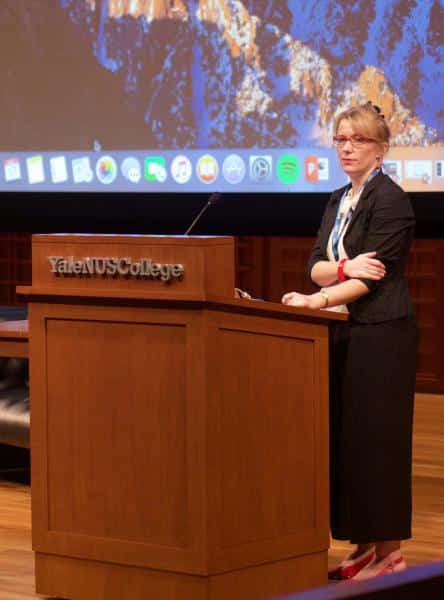Maria Taroutina
Associate Professor of Humanities, Yale-NUS College, Singapore
When did you first develop an interest in Slavic, East European, and Eurasian Studies?
Although originally a “Moskvichka,” ironically, I only became interested in Slavic, East European, and Eurasian Studies—and more specifically in Russian art—during my college junior year study abroad program at Cambridge University, where I had the extraordinary privilege of studying with Professor Rosalind Polly Blakesley, a leading expert in the field. While I grew up with an intimate firsthand knowledge of the Tretyakov Gallery’s rich collections, I never really had the chance to engage with Russian art from a critical and rigorous academic perspective—an experience that opened my eyes to its multivalence, complexity, and unique history.
What support have you received throughout your career that has allowed you to advance your scholarship?
I have been very fortunate to receive generous support from a number of different institutions and organizations, including Yale University, Yale-NUS College, the Georgette Chen Trust, and the Andrew W. Mellon Foundation, which facilitated the publication of my first book monograph through the Art History Publication Initiative (AHPI).

What is your current research/work project?
My current book project, tentatively titled Exotic Aesthetics: Art, Race, and Representation in Russia in the Age of Empire, focuses on questions of race and representation and examines the various ways in which Russian artists and cultural practitioners participated in the discursive matrices that advanced Russia’s colonial machinery on the one hand and critiqued and challenged it on the other, especially in territories that were themselves on the fault lines between the East and the West. Striving to be attentive to subaltern voices, it excavates the lived experiences of the ethnically diverse peoples and marginalized communities in Russia’s imperial orbit. It also investigates the parallels and divergences between distant and intra-imperial racialized identities and the varying ways in which these were represented by artists and interpreted—or misinterpreted—by Russian audiences throughout the “long” nineteenth century and into the early Soviet period.
What does your ASEEES membership mean to you? How has your involvement with ASEEES helped to further your career?
ASEEES is by far the largest and most prominent interdisciplinary association of scholars who work on Slavic, East European, and Eurasian Studies globally. The annual conventions bring together experts from all over the world who represent a diverse range of fields such as history, literature, political science, art history, theater, music, cinema, and linguistics. As someone whose research reads across various media, I have benefitted enormously from attending almost every ASEEES convention since 2012 and engaging in discussions and debates with colleagues from different disciplinary backgrounds. My scholarship has been significantly broadened, deepened, and enriched by the generous—and at times critical—feedback that I received on my work in progress. In 2019, I was awarded the USC Book Prize in Literary and Cultural Studies for my first book, The Icon and the Square: Russian Modernism and the Russo-Byzantine Revival, which was both a big surprise and a huge honor and came at a critical point in my career.
How do you envision your current research projects within the broader field of SEEES?
I believe that we are currently experiencing a momentous and long overdue reckoning on questions of race, bias, and systemic discrimination both in our profession and in our field, as evidenced by the most recent issue of Slavic Review (Vol. 80, No. 2) which featured a Critical Discussion Forum on Race and Bias. The contributors challenge us to collectively rethink race as a critical category in our research and teaching in order to facilitate the epistemological deconstruction of existing canons and paradigms in Slavic, East European, and Eurasian Studies. These urgent goals are absolutely at the core of my current research project. Additionally, in this year’s convention I will be participating in a roundtable discussion on “Decolonizing the Russian and Soviet Art History Survey” that will focus on ways in which we can translate these pressing questions into our teaching as well.
 Besides your professional work, what other interests and hobbies do you enjoy?
Besides your professional work, what other interests and hobbies do you enjoy?
I love all things culinary, and especially eating my way through different cultures and attempting to reproduce newly discovered dishes at home. Living in Southeast Asia for the past eight years has dramatically expanded my gastronomic horizons.
